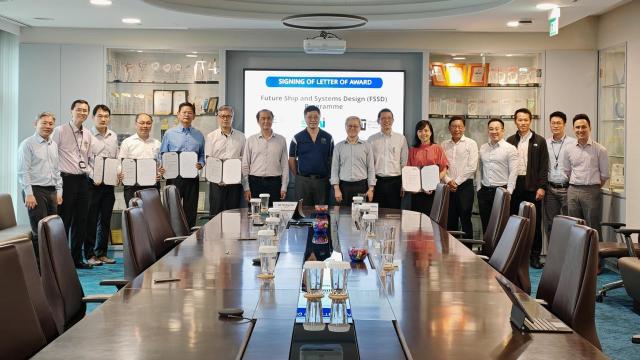When Dr Lee Shuen Yee took up wushu as a student-athlete, she didn’t know that it would one day help her research work on age-associated chronic diseases.

Dr Lee Shuen Yee at Yong-en Care Centre, one of the centres with the pneumatic machines used in the Gym Tonic training programme.
Dr Lee Shuen Yee, Research Fellow from SIT’s Health and Social Sciences (HSS) Cluster, took home the bronze prize for the Singapore Young Investigator Award (Clinical Research) at the Singapore Health and Biomedical Congress 2021. She impressed the judges with her oral presentation on the Gym Tonic pneumatic machine resistance training programme (GT) for older persons.
Singapore Young Investigator Award
This year’s competition was a virtual one, which saw Dr Lee competing against four other presenters.
She said, “This was my first time attending a virtual oral presentation competition, so I did not know what to expect! But it was an interesting experience. It felt stressful because there was a countdown timer pinned on the screen to remind us that we only had 10 minutes. But all in all, it was a good experience because it was also nice listening to other candidates present their clinical research work.”
Catalysts for Transformation
Under the tutelage of Associate Professor Wee Shiou Liang, Dr Lee and her teammates from HSS have been working on ageing research. Their research paper on GT details a groundbreaking, evidence-based strength training initiative to get elders in the community to be more active. The pneumatic machines, which allow elders to set their personal goals, are currently available at 26 elder care facilities.

Dr Lee (right) with A/Prof Wee Shiou Liang (left) at the Yong-en Care Centre in Bukit Merah.
Read our interview with A/Prof Wee Shiou Liang here.
Working with Community Partners
Lien Foundation initiated the GT project in 2014. It then collaborated with local health technology company, PulseSync to operationalise GT at community clubs, senior activity centres, and senior care centres. From 2018 to 2019, PulseSync collected the data at three sites using a pragmatic randomised-controlled trial (RCT) design.
This is the first-ever study that evaluates the effectiveness of the community-delivered pneumatic resistance training programme as previous studies could only focus on laboratory interventions, due to the prohibitive cost of the pneumatic machines. PulseSync collected data on the 12-week Gym Tonic programme and the SIT HSS research team evaluated the effectiveness outcomes.
Dr Lee said, “We had to analyse a large dataset. We conducted multiple rounds of data cleaning and analysis, which involved communication and coordination with multiple stakeholders. The process was expected due to the nature of real-world data, which further emphasises the importance of the work.”
Encouraging Results
The pneumatic machines, which differ from conventional plate loaded machines due to the use of compressed air, reduce stress on joints, lower the risk of injury, and improve safety for users. Pneumatic machines also allow for smaller weight increments, so they can better cater to physically frail elders. After 12 weeks, lower-body muscle strength improved by 11-26% and fast gait-speed improved by 7% in the intervention group (Gym Tonic) compared with the control groups (no intervention). These results were regardless of the participants’ frailty status and baseline. The team also found that there was high adherence (90% attendance), even 12 weeks after the intervention – suggesting that Gym Tonic is effective and can be implemented at scale.
Grounded in the Community
Dr Lee said that it was after taking a module on physical activity and health during her undergraduate studies that inspired her to seek a better understanding of how exercise can prevent age-associated chronic diseases.
She said, “Working in the field of ageing and interacting with older adults, especially those in the community, is important to me. It gives me a snapshot of what our future will look like when we age – and there is really so much more we can do now, to better understand the factors driving successful ageing.”
Learning from SIT Researchers
Dr Lee is currently working on studies to better understand associations of frailty and exercise with chronic diseases and other health outcomes (mortality, functional disability, quality of life, etc.)
“We also have a study that has been accepted for publication at BMJ Open on the associations of housework activities with cognitive function, specifically in attention and memory. SIT has provided me with various opportunities to work with, and learn from, outstanding researchers in the field. Through collaborative research, I can improve both my technical skills such as data analysis, and soft skills such as project management, presentation, communication, critical thinking. All these skills are important for my future career and growth,” said Dr Lee.
Article contributed by Sherlyn Tan Si Lin, Year 2, Digital Communications and Integrated Media, SIT
![[FA] SIT One SITizen Alumni Initiative_Web banner_1244px x 688px.jpg](/sites/default/files/2024-12/%5BFA%5D%20%20SIT%20One%20SITizen%20Alumni%20Initiative_Web%20banner_1244px%20x%20688px.jpg)


